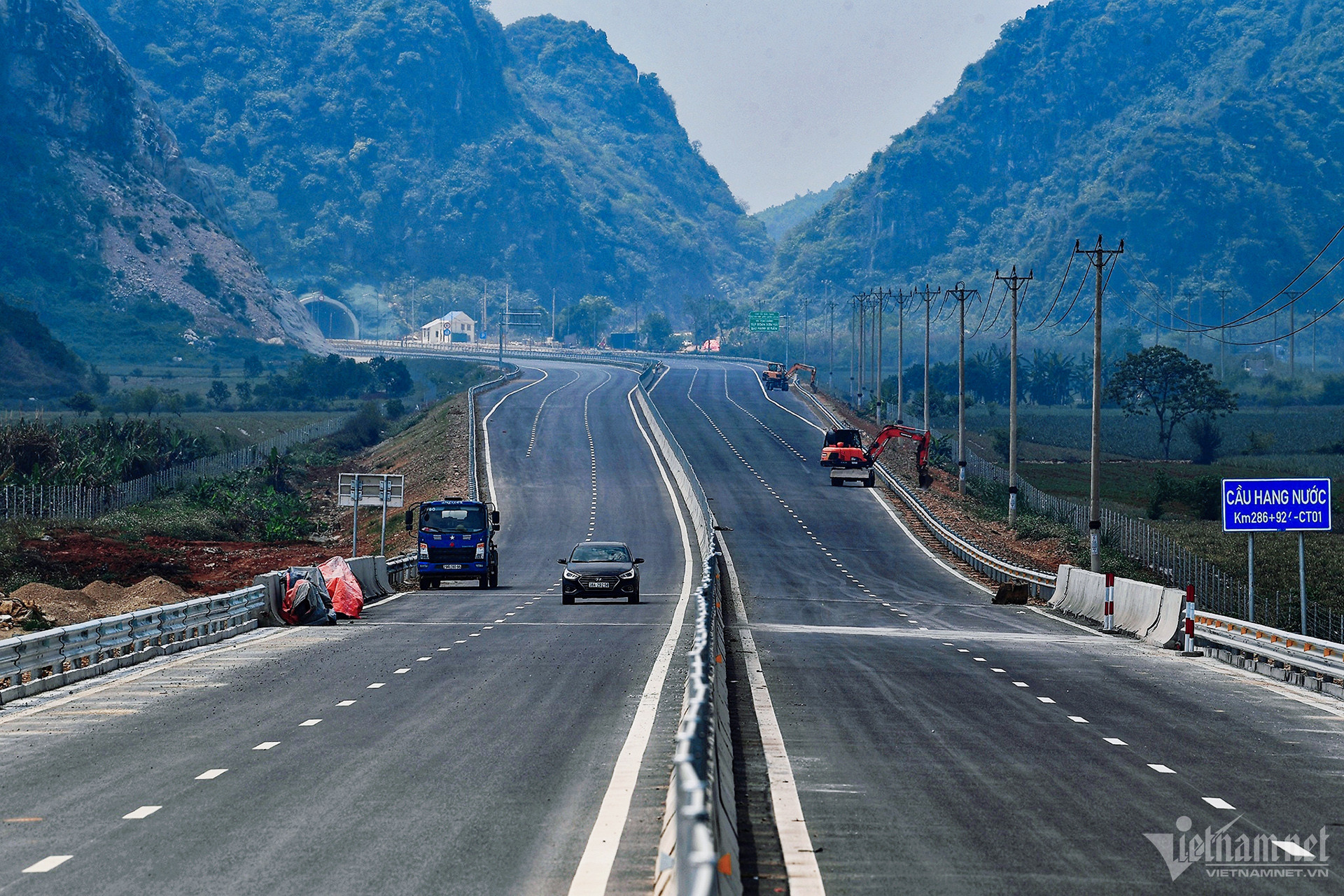
Prime Minister Pham Minh Chinh has once again sent a telegram requesting new two-lane high-speed road projects as soon as possible, and infrastructure on existing highways, such as smart traffic systems and stop stations.
The telegrams, set late last week, point out that there are risks in operating highways with investment in stages (instead of one-time investment), such as traffic insecurity, congestion and accidents. The accident that occurred in mid-February on Cam Lo – La Son Highway is an example.
One-lane roads each way only allow one vertical row of vehicles, thus causing obstruction and congestion for the vehicles behind. When they reach overtaking sections, many drivers tend to encroach on the other side on the road, which poses high dangers, especially when there is no hard median strip.
After many highways were put into operation, a lot of problems were exposed. The problems are diverse, from the lack of stop stations, emergency lanes, hard median strips and lack of light at night.
On many highways, there is only one lane each way, such as Cam Lo – La Son, 98.3 kilometers long, that connects Quang Tri and Thua Thien - Hue. There are also bottlenecks on many routes, which may cause traffic jams and accidents.
On Phan Thiet – Dau Giay (99 kilometers) Highway, Vinh Hao – Phan Thiet (100 kilometers), Nha Trang – Cam Lam (49 kilometers) with total length of 248 kilometers, there is no filling station, while public toilets and stop stations are lacking.
On some road sections, there is no phone signal, causing inconvenience to both drivers and passengers, and rescue teams.
The problems can also be found on La Son –Tuy Loan Highway that links Thua Thien -Hue and Da Nang City. On the highway along Quang Ninh, 176 kilometers, beginning from Bach Dang Bridge, going across eight districts and cities and ending at Mong Cai Border Gate, there are no filling stations, stop stations or public toilets.
A number of traffic accidents have been reported since the beginning of the year. Two motorbikes going back up the road on Noi Bai – Lao Cai highway collided with a waste carrying truck, killing four young men. Three traffic accidents occurred recently on Phan Thiet – Dau Giay Highway. And most recently, three people were killed in an accident among four vehicles on Cam Lo – La Son Highway.
The ‘highway dream’
In 2023 alone, nine highway projects were completed and put into operation. To date, Vietnam has 2,000 kilometers of highways.
In general, it takes a long time to start a highway project because it takes a lot of time to fulfill procedures, while implementation goes slowly because of tardiness in disbursement. However, the situation has slightly improved recently, while Vietnam is striving to have 3,000 kilometers of highways by 2025 and 5,000 kilometers by 2030.
Experts believe that it is necessary to set standards for highways and there should be at least four lanes, with two lanes for each side. There must be an emergency lane, hard median strip and other supporting works.
Regarding the speed at which vehicles can run on highways, experts believe that it would be better to set different speeds for two different lanes to help ease conflicts. The vehicles going at higher speed would go on the left lane, while the vehicles running more slowly would go on the right lane.
There should also be a specific radio channel that provides information about traffic situations on site, and the places where traffic jams occur, so that drivers can change their directions quickly.
Experts also point out that Vietnam must not follow the old way to develop highways nationwide. In addition to decentralization and simplification of administrative procedures, it is necessary to attract investment from different sources.
One of the suggested solutions is concession, i.e highways can be allocated to private investors or organizations to operate through bidding.
Also, there should be reasonable mechanisms to encourage private investors to develop projects. For example, investors would not have to pay land rent, and they can build houses and commercial service areas within their spheres of operation.
It is time to reconsider the laws related to PPP and find out why the PPP scheme has not attracted private investors and why most large works can only be implemented with the state’s budget.
Nguyen Huy Vien